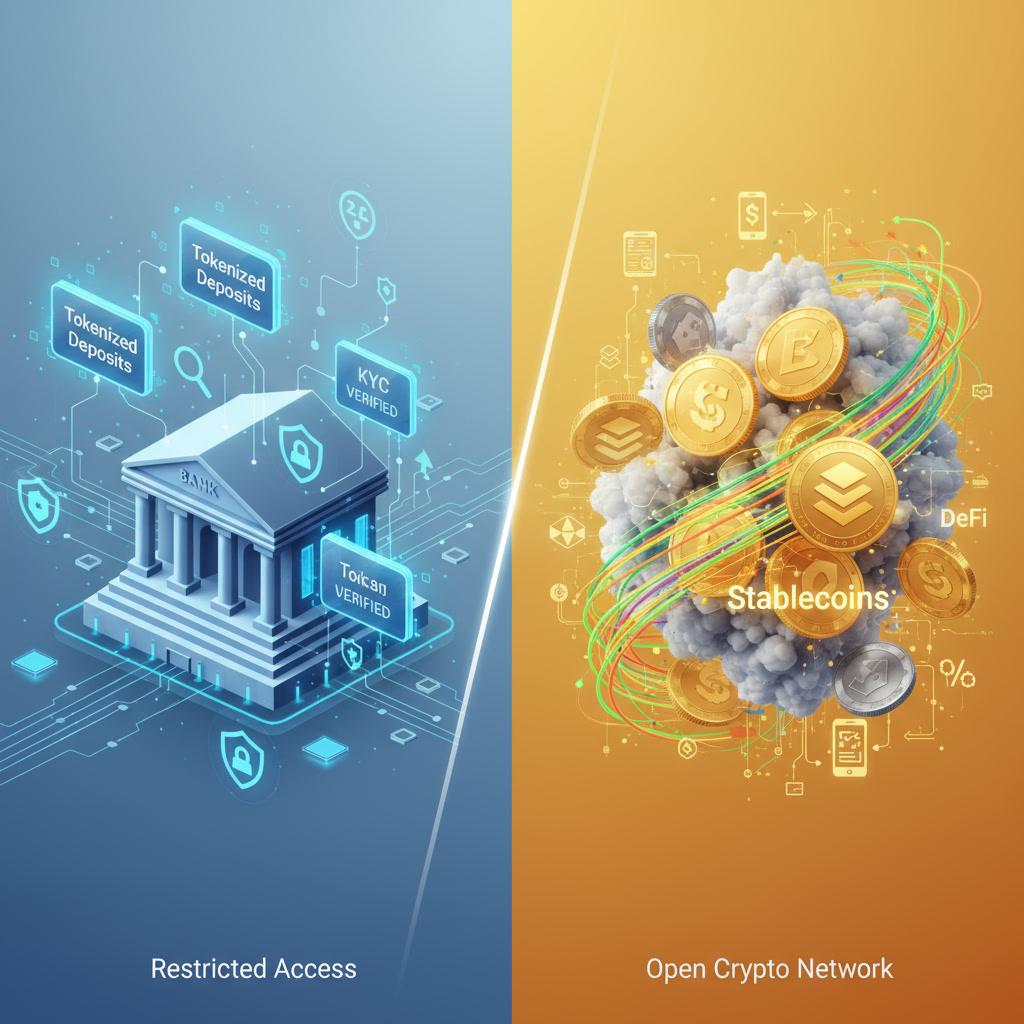The financial industry is increasingly exploring blockchain innovations, and one of the emerging concepts is tokenized bank deposits. This innovation involves recording bank account balances as tokens on a blockchain, typically issued and managed by banks or licensed financial institutions. While this approach promises a new level of digital representation of deposits, experts suggest that tokenized deposits may fall short in terms of flexibility and utility compared to stablecoins.
What Are Tokenized Bank Deposits?
Tokenized bank deposits are digital representations of traditional bank balances on a blockchain. They are usually issued in a permissioned environment, meaning only authorized participants can access or transact with them. A key feature of these tokens is the requirement for Know Your Customer (KYC) verification, ensuring that only verified users can hold and transfer them.
Despite their innovative nature, tokenized deposits have limited interoperability within the broader cryptocurrency ecosystem. Unlike open blockchain tokens, they cannot freely move across decentralized applications (dApps) or decentralized finance (DeFi) protocols. As a result, their functionality and use cases are inherently constrained.
Stablecoins: A Benchmark for Flexibility
In contrast, stablecoins are designed to maintain a stable value, often pegged 1:1 to fiat currencies, and backed by cash reserves or short-term assets. Their core advantage lies in composability—the ability to interact seamlessly across multiple DeFi applications, payment systems, and crypto protocols.
Moreover, stablecoins frequently employ robust reserve mechanisms to reduce liquidity risks. Overcollateralized models or fully-backed reserves help ensure that holders can redeem tokens for their underlying value even in volatile market conditions. This combination of stability, interoperability, and liquidity support makes stablecoins highly versatile in the crypto ecosystem.
Limitations of Tokenized Bank Deposits
The primary limitations of tokenized bank deposits stem from their permissioned nature. By design, these tokens are subject to strict access controls and regulatory compliance, which restricts their use outside the issuing institution’s ecosystem. KYC requirements, while necessary for regulatory adherence, further limit spontaneous adoption and peer-to-peer transactions.
Experts argue that these limitations make tokenized bank deposits less competitive than stablecoins for applications requiring high liquidity and broad interoperability, such as DeFi lending, automated market-making, or cross-platform payments. While they may serve as a bridge between traditional banking and blockchain systems, their long-term potential may remain niche unless regulatory frameworks evolve.
Security and Risk Considerations
When comparing security, the risk profile depends on the reserve management and governance structures. Stablecoins with transparent cash or asset reserves can offer lower liquidity risk than tokenized deposits based on fractional or segmented reserves. Tokenized bank deposits, though backed by real bank balances, may be limited in risk mitigation if access controls prevent dynamic liquidity management.
Future Outlook
While tokenized bank deposits represent an important step in integrating traditional banking with blockchain technology, their utility is constrained by regulatory oversight and technical design. Stablecoins, with their broad functionality, composability, and reserve-backed mechanisms, remain the preferred option for many DeFi and crypto applications.
Experts suggest that tokenized deposits will likely coexist with stablecoins rather than replace them. Their adoption will depend heavily on banking policies, regulatory clarity, and market demand, particularly for institutional clients seeking regulated digital assets.
In conclusion, tokenized bank deposits provide a regulated, blockchain-based representation of traditional deposits but may struggle to compete with stablecoins in terms of flexibility, composability, and practical use within the broader crypto ecosystem. While promising for bridging banking and digital finance, their ultimate impact will depend on regulatory evolution and market adaptation.
Ready to start your cryptocurrency journey?
If you’re interested in exploring the world of crypto trading, here are some trusted platforms where you can create an account:
- Binance – The world’s largest cryptocurrency exchange by volume.
- Bybit – A top choice for derivatives trading with an intuitive interface.
- OKX – A comprehensive platform featuring spot, futures, DeFi, and a powerful Web3 wallet.
- KuCoin – Known for its vast selection of altcoins and user-friendly mobile app.
These platforms offer innovative features and a secure environment for trading and learning about cryptocurrencies. Join today and start exploring the opportunities in this exciting space!

Join our crypto community for news, discussions, and market updates: CryptoBCC on Youtube | Instagram | Telegram | Pinterest | Facebook | Discord | Tiktok | Threads | X(Twitter).

Disclaimer: Always do your own research (DYOR) and ensure you understand the risks before making any financial decisions.




